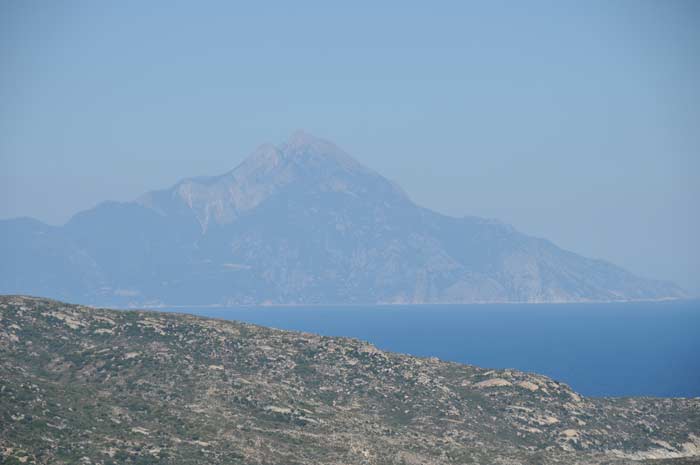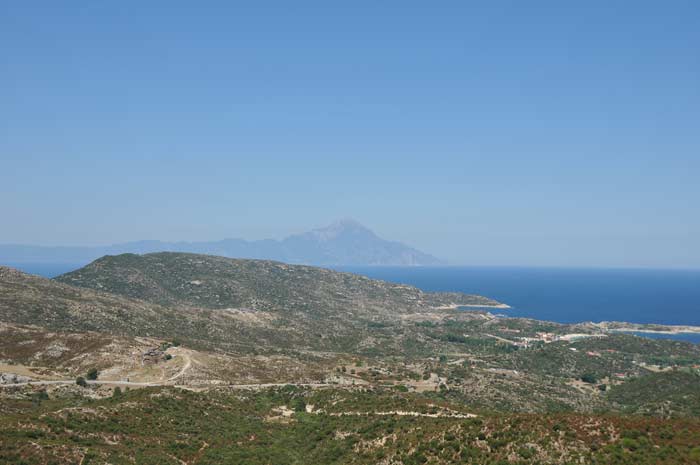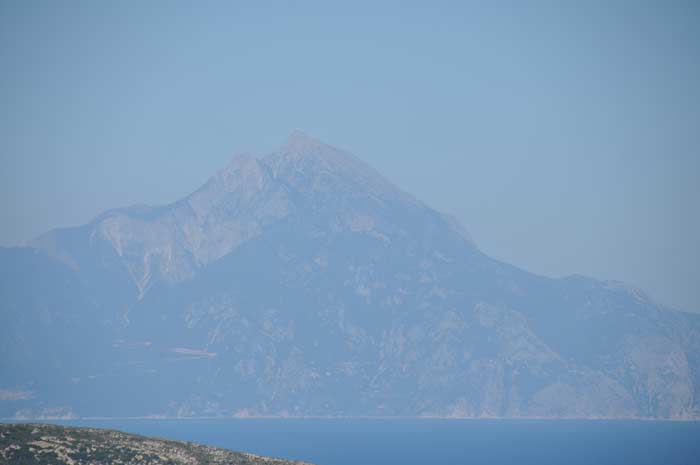Holy Mount Athos - exploring the beaches of Sithonia
- Written by Portal Editor

During our first excursion around Sithonia, the second finger of Halkidiki, we did not really had the chance to see Mount Athos on the third finger at the orthodox peninsula of same name.
Depending on the weather situation, you normally can see the solid rock with its current size of proudly 2033 meters from high above Kalamitsi already when there is more or less clear view.
In common parlance, the term "(Mount) Athos" either is used for the whole peninsula Athos, the monastic state, or even the actual mountain on the southeast tip of the peninsula.
In some comments the beginning of the history of monasteries and the monastic republic on Athos is traced back until the early Christian period, but the first reliable and provable information about monastic life on Athos most probably goes back provable to the beginning of the 9th century during the Byzantine period.
From Kalamitsi we moved on towards Sarti, where we came across this seemingly endless stretch of beach. A few campers had gathered here.
At the other end of the not at all crowded beach, with a magnificent view to the 3rd finger of Halkidiki, there is a small beach-bar offering well-chilled drinks and tasty fish dishes.
And of course, again the view to Mount Athos. Since the 11th century Mount Athos was of great importance for Christians of Russians from Kiew. So first, cloisters for monks from Russia appear. From the 15th century the Princes from Moscow contributed to the financing of the monasteries and established their own monasteries. They were subordinated to the Moscow Patriarchate until the 16th century.
When the monks stand up against the Holy Synod, the state-controlled church leadership in the Russian Empire, the Russian ambassador from Istanbul, with the help of soldiers and firefighters, sent more than 1,000 monks from their monasteries and deported them to Russia.
Today 20 major monasteries of the Orthodox monastic republic are part of the UNESCO World Heritage. The first monastery, the Great Lavra, was founded in 963 by the Byzantine monk Athanasios Athonites. Until that time, monks who were based on the models of the ascetic monks in ancient Egypt already settled on Athos. Soon Bulgarian, Romanian, Russian, Georgian and Serbian monks founded further major monasteries on Mount Athos. There were also Italian settlements. Today, there are 20 large monasteries, of which 17 are Greek, one Serbian (monastery Chilandar), one Bulgarian (Zografou Monastery) and one Russian (monastery Panteleimonos).
This summer residence was a bit away from the beach, a classic railroad waggon, which was converted into a holiday home. However, it looked like the property and car appeared unused for quite some time.
After Sarti terrain rising steadily, mostly covered with pine forest. Here the rocks and the forests comes close to the sea, thus forming beautiful bays at sea level with tiny roads that lead down to the sea.
Despite high season, tourists gathered along the beaches, even so, it was not too much crowded, the number of bays even offers the possibility of switching from bay to bay. Guests were predominatedly of Balkan origin.
We went towards Vourvourou, another cove with shallow sandy beach. Here yachtsmen and motor boat friends were mostly encountered as guests, as there are in front and some islands of the coast, the lure with secluded swimming and diving bays.
As the twilight slowly begins, we were thinking of the return trip to our caravan, thanks to our today route richer of many impressions.
Please read as well:
Olynth - once the political center of Halkidiki
Agios Pavlos - The S. Pauls spring next to next to Neos Marmaros

